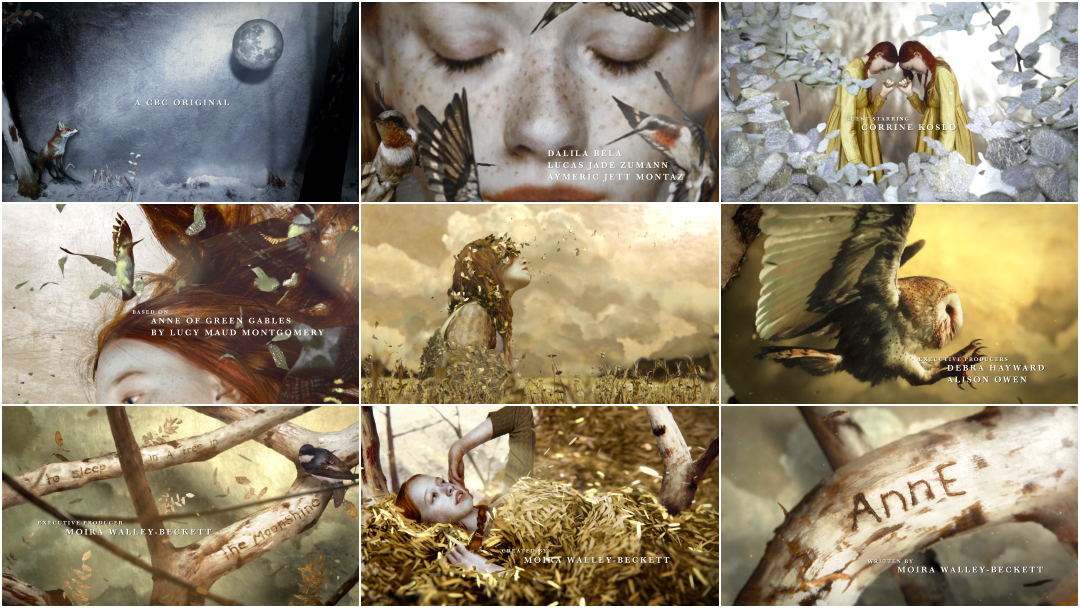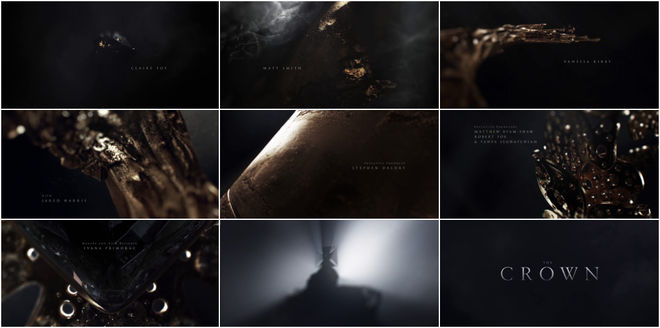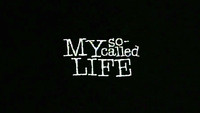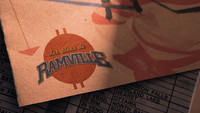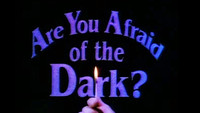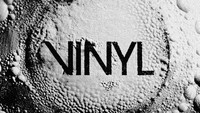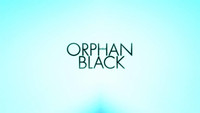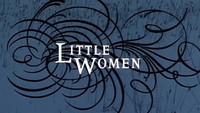The opening to Anne, the newest adaptation of the classic book by L. M. Montgomery, is a gorgeous and gilded journey through the seasons. Helmed by Moira Walley-Beckett, Emmy Award-winning writer for Breaking Bad, and produced by Miranda de Pencier, producer of the 2010 film Beginners, the show takes Anne of Green Gables into new territory, bringing a dark sensibility and a sharp eye to the story of an orphaned young woman on Prince Edward Island in 1890.
The book on which the series is based, Anne of Green Gables, is a Canadian treasure. Having sold more than 50 million copies worldwide, it’s also a global sensation, making Prince Edward Island, Canada’s smallest province, a popular tourist destination. Since the 1950s, the story of plucky Anne Shirley has been brought to television more than a dozen times in both movies and series. From 1956’s Anne of Green Gables, a made-for-TV musical, to 1979’s Akage no An (Red-haired Anne), a Japanese animated series, to Road to Avonlea, a live-action series broadcast in Canada from 1990 to 1996, Anne has taken on myriad forms.
Most viewers’ first encounter with the new Anne will be through word of mouth, advertising, and of course, the show’s opening title sequence. Walley-Beckett and de Pencier’s vision for the opening centered on Anne as a force of creativity and a force of nature, communing with the world around her. Having honed her visual storytelling through her work with Breaking Bad creator Vince Gilligan, Walley-Beckett was looking for imagery to “roil the imagination.” The resultant opening, crafted by Creative Director Alan Williams and studio Imaginary Forces along with Artist Brad Kunkle, is a lush, glimmering world of silver and gold specks, freckles and fauna and flowing copper hair, all dappled with light.
Telling the story of Anne through her movement in nature, it begins with a cold, wintry landscape and images of a girl, fragmented and lonely. This soon gives way to warm hues and hummingbirds, yellow dresses and shimmering leaves. The end of the sequence is – to borrow the words of Tragically Hip frontman Gord Downie – “cast in a golden light”. Newcomer Amybeth McNulty, delicately painted by Kunkle, is Anne, lying in the woods surrounded by leaves, serene, her world beginning to take root. The title appears at last, carved into wood. That’s Anne spelled with an E, if you don’t mind.
A discussion with Anne Showrunner MOIRA WALLEY-BECKETT and Producer MIRANDA DE PENCIER, Creative Director ALAN WILLIAMS of Imaginary Forces, and Artist BRAD KUNKLE.
It must be so exciting to finally get this show out in the open, right?
Miranda: Absolutely! We're still delivering and colour correcting and doing sound mixing on the final episode!
Moira: It's still a work-in-progress, but it's wild that it's out in the world!
Miranda: As Moira and I put Anne out into the world, we are excited to see how much she can be a voice for many people. How much she as a character can resonate and reflect a lot of the things that matter to us: women's rights and the environment and immigration and a whole bunch of issues.
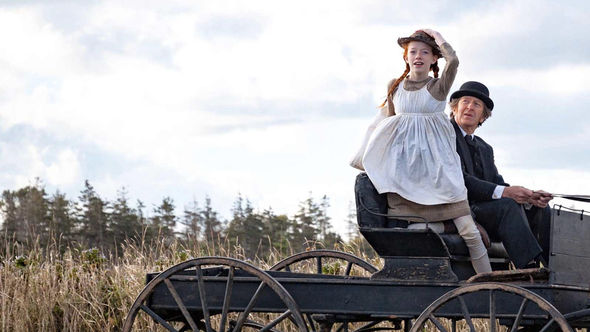
Anne (Amybeth McNulty) and Matthew (R.H. Thomson) sit on a wagon in this still from Anne
How did you two first meet and start collaborating?
Miranda: You want to tell that one, Moi? [laughs]
Moira: [laughs]
Miranda: I was looking for a writer for a movie that I was developing. It was actually Michelle MacLaren, the director, who is a mutual friend, that put us together. I said, “Who is a great writer that you know, that you've been around lately?” She said, “Moira Walley-Beckett.” Moira, at the time, was writing for Breaking Bad, but hadn't won awards yet! [laughs] So I read samples of her writing – including plays that she'd written – and was completely blown away, I was like, “Woo! I want to work with her.” That was my first initiation.
—Moira Walley-BeckettI’m drawn to people with natural wounding and obstacles, and that’s what at first drew me back to Anne
Moira: Then Miranda sent me her material. It was a movie called The Grizzlies and it's based on a true story. I was absolutely smitten, and there was no way that I couldn't write it. So we worked on that project together for like seven or eight years, I guess! [laughs] A shared passion project—
Miranda: We went to the Arctic together on it!
Moira: Yeah, we visited the Arctic, travelled in little planes. But it's been a really long, excellent partnership that started with that movie and persisted and... then we thought, “Oh, time for Anne!” Here we are.
Brad and Alan, were you familiar with Anne of Green Gables before this project?
Alan: Yeah. Growing up, my parents were extremely strict. I grew up in the mountains and they didn't let me watch a lot of TV and the few times that they did was for the PBS version of Anne of Green Gables. I fell in love with those characters. Before I even got this pitch about a year ago, I went back to the books and re-read them.
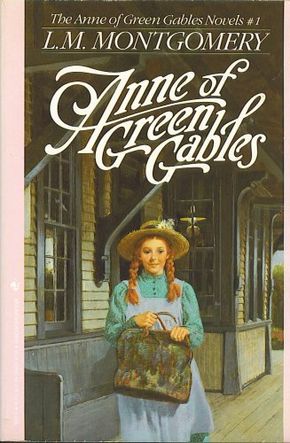
Anne of Green Gables by Lucy Maud Montgomery
I've always felt that Anne was this perfectly complex character. She's super delicate – she adores romance and poetry, she'll cry looking at a sunset or cherry blossoms – but at the same time she's incredibly fierce. I just felt like that balance between sensitivity and strength, being extremely intelligent but also in love with the imaginative... For a guy, watching this series, it kind of gave you that validation or permission to kind of go between those two. It was that complexity that initially made me reach out to the producers about wanting to work on this.
Brad: When Imaginary Forces reached out to me, I got the book and I started reading and connected with it instantly. I get it now. I get why this came in my direction, 'cause I think my work does speak to a lot of those things. The feminine is a really clear direction in my work, talking about the feminine.
Moira, you're previously known for Breaking Bad, Flesh and Bone... What was it like turning that kind of acumen to Anne?
Moira: You know, I'm certainly drawn to darker stories. I'm drawn to very human, psychological stories, and that's the connective tissue between Breaking Bad and Flesh and Bone and Anne. I consider Anne to be a very deep character drama. I'm drawn to people with natural wounding and obstacles, and that's what at first drew me back to Anne – her wounding and the power of that within the story.
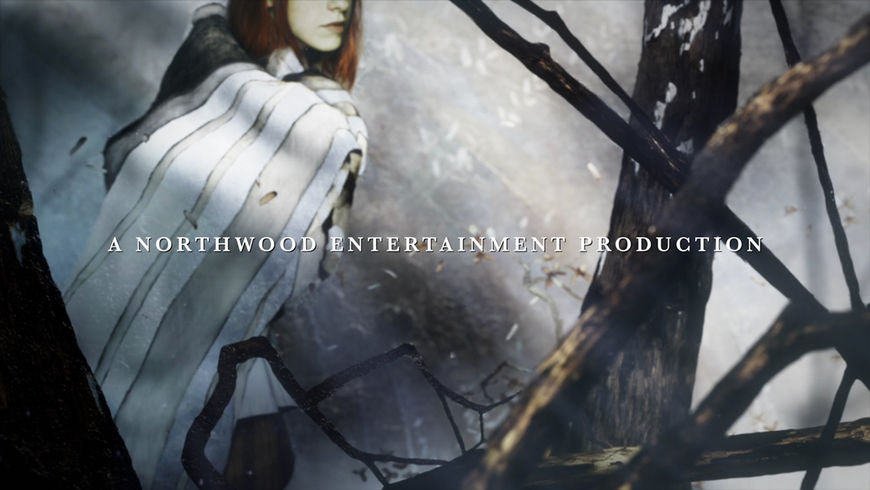
You've said before that over the course of working on Breaking Bad, you learned how to think visually about character.
Moira: Yeah, definitely. Since my experience with Vince [Gilligan], who is an incredibly visual storyteller, we spent a lot of time talking about what the scenes looked like in addition to the content of the scene. Certainly one of his big credos is: What's the first image? What's the first image of any scene? And so part of our jobs as screenwriters on Breaking Bad was to script the visuals. I really evolved and I'm so grateful for his mentorship.
When you thought about the opening for this show, the first image for Anne, what did you envision?
Moira: Well, we knew she had to be in the natural world. It was absolutely our clear directive and our vision. Anne's environment and her interaction with the natural world, her experience with nature and the way that she is part of it and converses with it actively... this felt like the foundation of the piece.
Miranda: The other thing was the idea of imagination. It was the other theme that we felt penetrates her and penetrates the audience on her behalf.
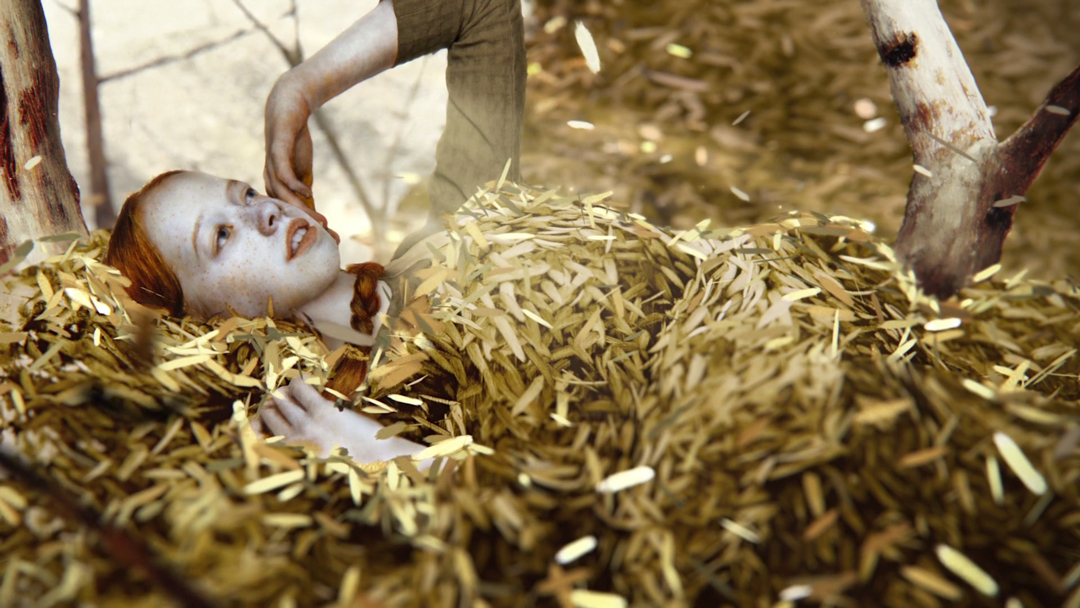
Alan: We got scripts from them, and we got stills of the talent. The language they were using to describe it – they were mentioning influences like Joe Wright's Pride and Prejudice, one of my favourite directors Terrence Malick, Days of Heaven... They talked about the camera moves being these really wide moves, as well as hand-held intimate moves on the characters. They were going to take it to a new place, but they were going to do it in a proper, authentic way. They got it. And what they brought to us was “nature” and “imagination.” Of course Anne is the core of that, but those two things were what they wanted to explore.
What kind of initial treatments did you put together, Alan? What did you pitch?
Alan: I typically gravitate toward live-action. What I didn't want to do is package Anne as this trendy, VFX-type scenario that would not be timeless. So we put together a live-action treatment and during that time we began thinking of some alternatives. One huge concept for us – in the live-action treatment – was to use the beauty of nature such as light and reflections and the way that light falls out of focus on a dewy leaf, the way that looks magical but it's real.
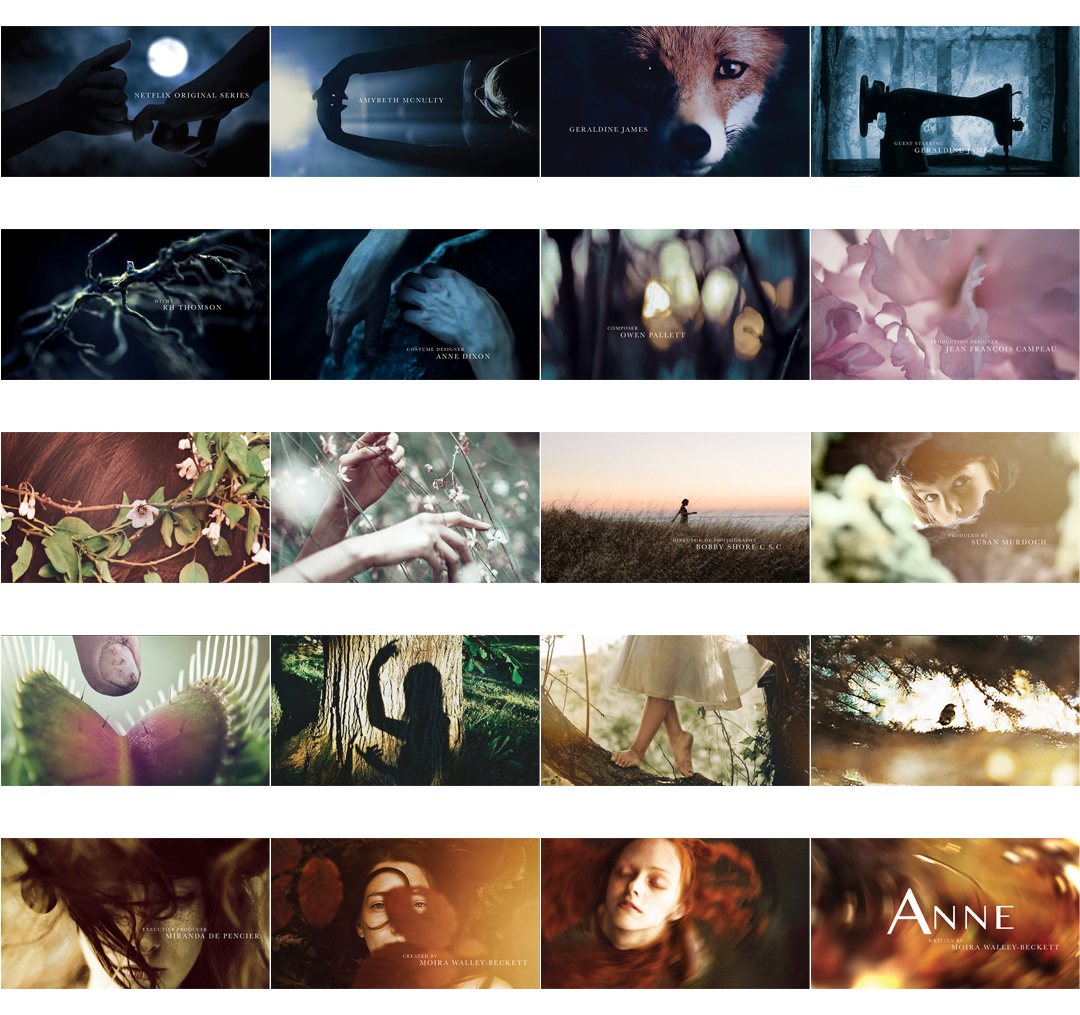
Image Set: Concept Boards #1 – "Authenticity – Seasons (Winter, Spring-Summer, Fall)"
I came across one of Brad’s paintings and was so enamoured. This was a flat, 2D canvas, but through the use of foil, gold foil and silver, it was able to capture light. I thought, “That is brilliant.”
Brad: Listening to you talk about it, I'm realizing the funny paradox... There's this sort of inherent surreal thing that happens for the viewer with the gold leaf. I'm realizing the paradox now, that what Imaginary Forces and Alan did was they made it possible for the viewer to sort of experience virtually what you can experience in person with my work.
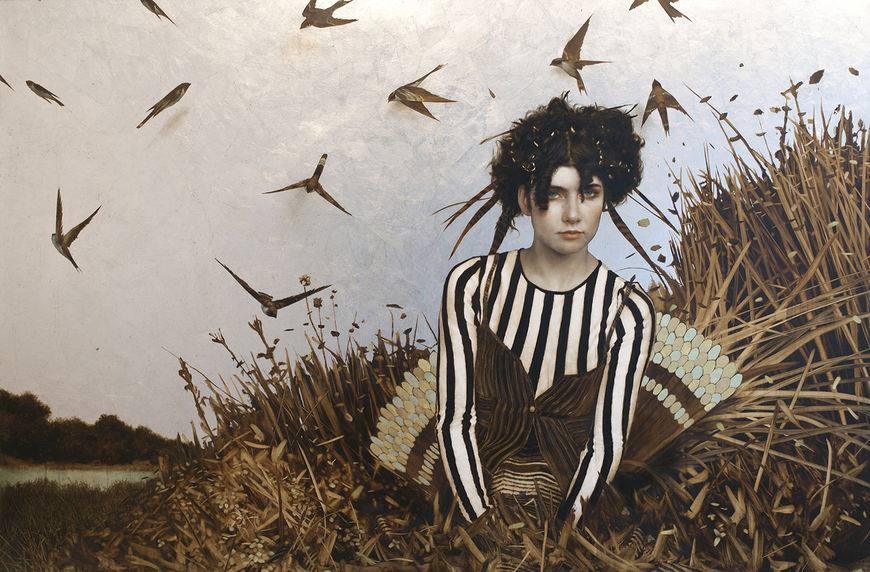
Painting by Brad Kunkle. The History of Nature, 2014. Oil, gold, and silver on linen. 46 x 72 inches.
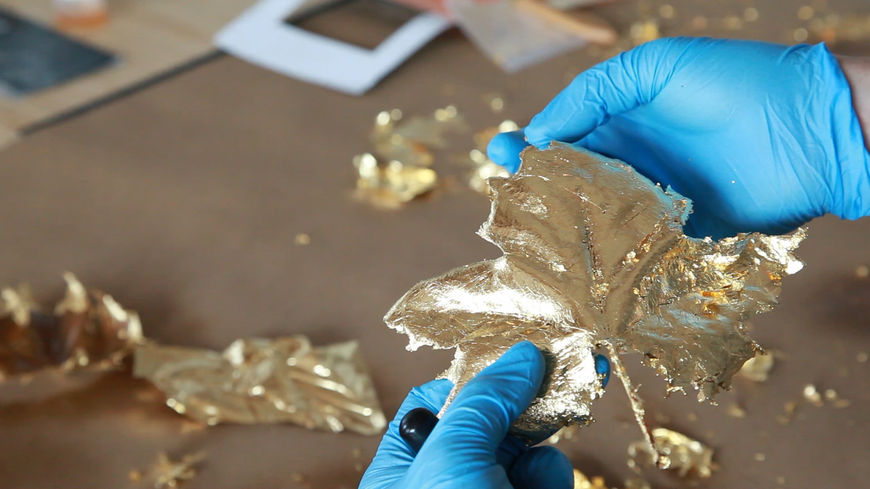
The gold leaf process applied to a leaf
Through the motion, you get that experience of the light refracting.
Brad: Yeah, and there's this strange passage of time. So when you're standing in front of it – and I think you experience this in the titles, too – there's a passage of time with the light on the leaf, but not on everything else. There's a still moment on the figures, because that light isn't changing, but the light on the gold and silver leaf is changing.
Miranda: They pitched a few ideas but it was that – the basis of Brad's work – and Alan's passion for it that spoke to us. We thought, “Wow, we've never seen anything like that!” Anne is such an independent individual and such a unique force that it was like, “Let's create something like Anne herself – that's rare, and that's special, and that's never been seen before!”
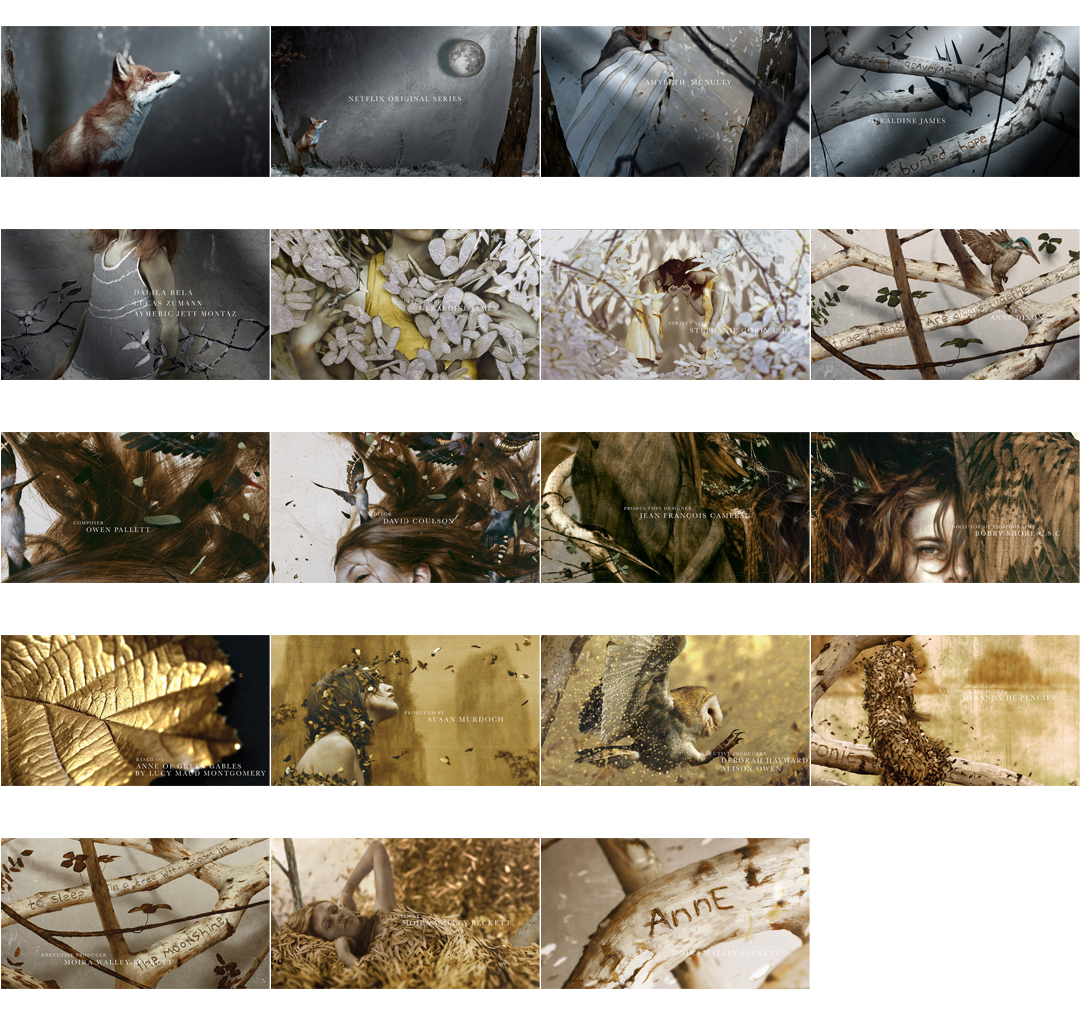
Image Set: Concept Boards #2 – "Authenticity – Light, Paint, Foil"
Moira: I would also add that I believe in it. It's so interesting your site is called Art of the Title, because I believe in the art of the title. It was super important to me – as it was on Flesh and Bone, which we filmed very specifically live-action – that titles should be standalone experiences that roil the imagination, that feel like they have a foundation in the show but that are separate, that are their own entity and their own piece of art.
Miranda: We love title sequences. We feel like memorable title sequences can absolutely stand on their own and add something that's reflective of the show but doesn't always have to be images of the show.
Brad, can you talk about your process for creating these images? What’s your preferred paint, what size are you working in?
Brad: I try to paint life-size as much as I can. Two of the portraits I had done of Amybeth, the actress, are life-size. The third one is almost life size. The canvases tend to be like 30” x 50”, some of these were 16” x 20”. I use oil paint on linen and then I'm using genuine gold and silver for the leaf.
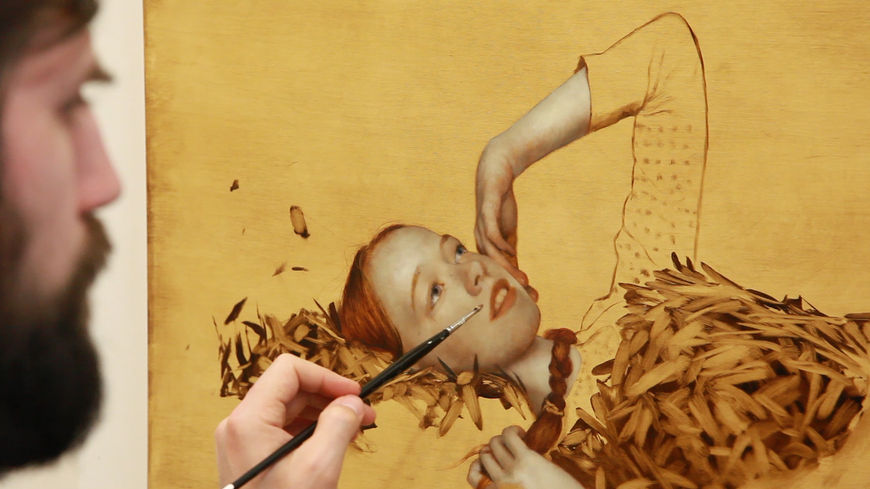
Artist Brad Kunkle works on a painting for Anne
Video: Behind-the-scenes video featuring Brad Kunkle in his studio, working on paintings for Anne
How much of this is new work and how much is built upon your existing compositions?
Brad: We probably used almost 75% from old paintings. I made six new paintings for the project. Then Alan and the team had sort of cut them up and added pieces from other paintings and we incorporated those into the existing paintings.
Alan: I didn't want to push it anywhere far away from his vision as an artist. I was like, this guy's work is beautiful. It has this femininity that speaks to the strength of Anne, it has this use of light and reflections and nature that speak to what Moira and Miranda are looking for. It was a shot in the dark, and it was a cool collaborative thing that happened because of it.

Painting by Brad Kunkle. Islands, 2012. Oil and gold on linen. 30 x 50 inches.
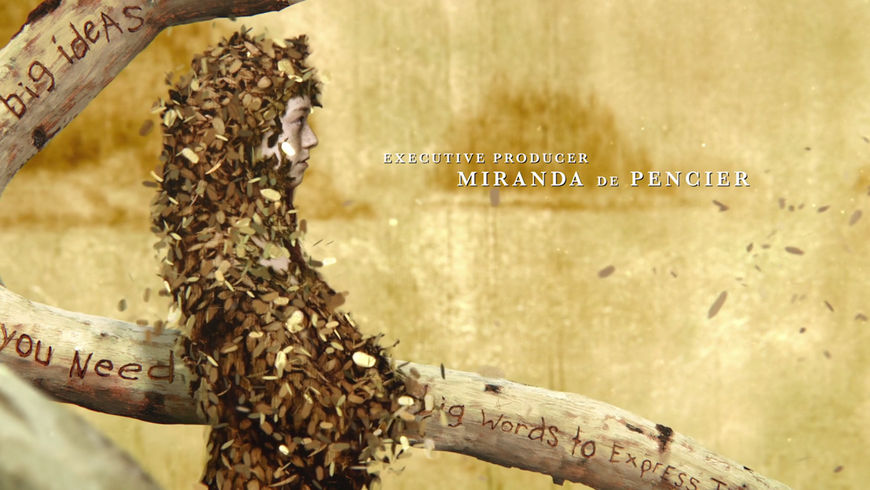
Still from the Anne main titles with elements from Brad Kunkle's painting Islands
Brad: It was the perfect project for us. I wouldn't have done this if I felt like it was a stretch for my work. I wouldn't have done it if it was for a commercial, to sell something. Here was an opportunity that was a dream come true for a painter like me, to be able to have this team and a director that I trusted. I was like, “Oh my god, they're going to bring my work to life in this way that I'll never be able to do on my own.”
Where did the words on the branches come from?
Alan: That concept is Brad's! The words are actually quotes from Anne the series...
Brad: Yeah, well a lot of the things you're seeing in the title sequence, the digital artists and Alan did that. Some of them are just pulled from what I had already painted. Lately in my work I've been doing a lot of that carving into branches. I grew up in Pennsylvania and I saw that everywhere.
—Brad KunkleIt’s sort of like if you put a scratch in your own skin. But it’s an interesting metaphor…
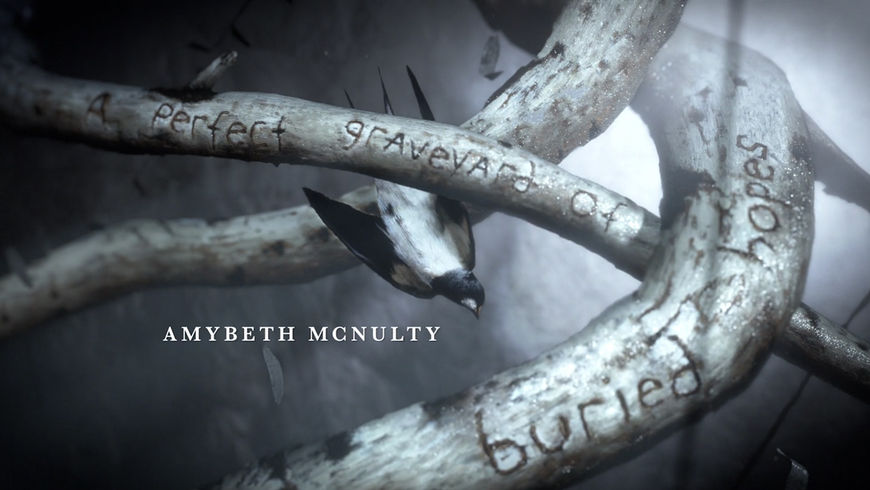
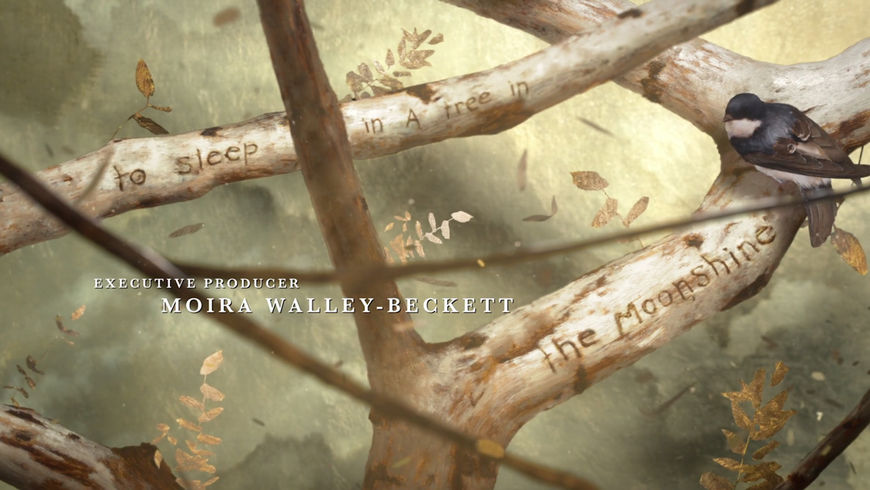
Brad: I don't condone that kind of graffiti at all. It's bad for trees because it exposes them to disease. It's sort of like if you put a scratch in your own skin. But it's an interesting metaphor... One of the reasons for carving your initials into a heart in a tree is so that your love grows with the tree. This strange connection with nature, growing with nature. That's where that idea came from.
Alan, how did you and the team at IF breathe movement into Brad's artwork?
Alan: Well, we were always trying to find a balance of retaining the beauty of Brad's artwork and yet bring in some modern CG and give it dimensionality. I knew that it would be a really thin line. We went back and forth on seeing how far we could push this. Brad initially brought us over gold-leafed canvas and silver-leafed canvases and we photographed that with different types of light moving across it. We got high-res stills of work that Brad had done before and his additional six paintings that he was working on. And Brad actually came in and we would all sit together, and our team of designers would make decisions.

Artist Brad Kunkle and Creative Director Alan Williams with one of Kunkle's paintings from the Anne titles
Alan: We would take the scanned photos and the stuff that we shot with the light moving across it and we would project that onto 3D geometry. It's photogrammetry, it's projecting paintings and photos onto 3D geometry. We relied heavily upon Cinema 4D. There were some shots that we also used Maya. We composited those shots in Nuke and in After Effects.
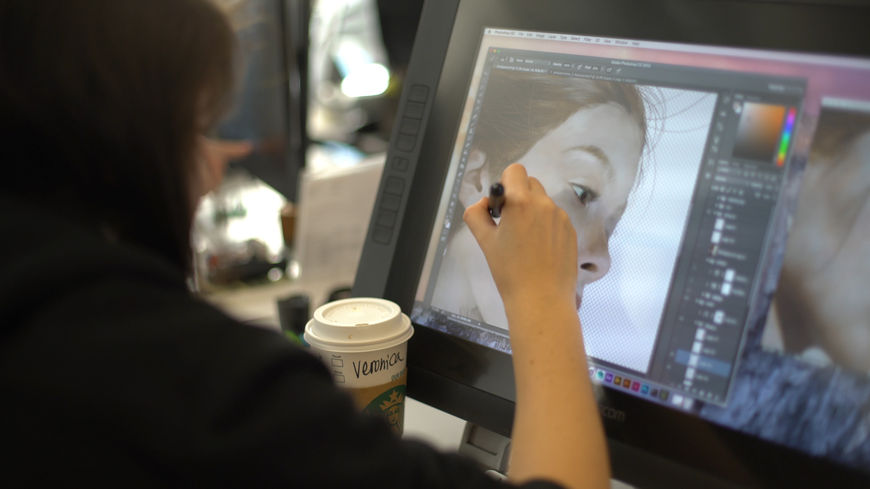
Designer Veronica Liu works on the Anne titles
—Alan WilliamsWe would take the scanned photos and the stuff that we shot with the light moving across it and we would project that onto 3D geometry.
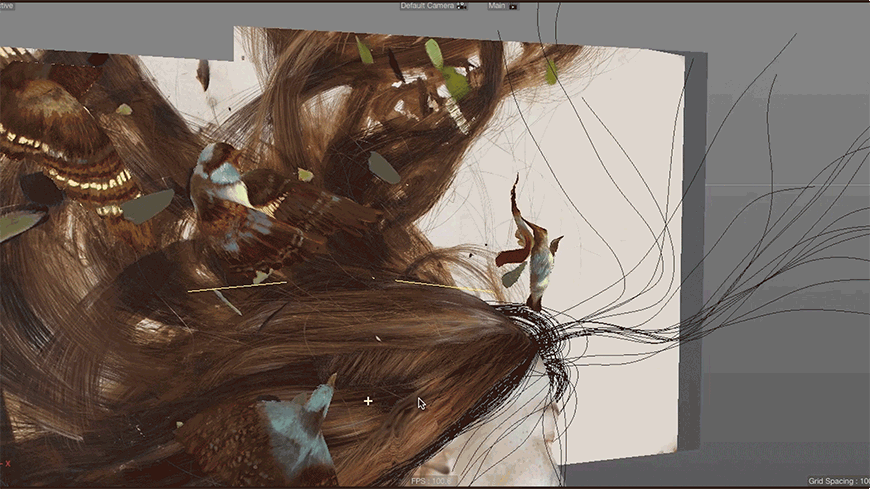
An in-progress look at the CGI photogrammetry technique
As you watch that opening now, it has that feeling of imagination or this dreamlike state. What was the tone that you were hoping to achieve when you set out?
Moira: Well, we called it our “art project.” Together with Alan and the team at Imaginary Forces we conceived of this concept of Anne's journey through the seasons and, subsequently, life. She starts in this stark winter of her life and moves through a lonely cold landscape, interacting with nature. She goes on, followed by nature and accompanied by nature, and as she journeys forward, she enters into spring and summer and then fall, where it becomes golden as she's finding her place in the world.
Alan: Within the piece we have the fox, and the hummingbirds, and the owl... All the different animals and plants in P.E.I. We were having these conversations and I remember asking Moira, like, “What about hummingbirds?” And one of my favourite quotes from Moira was she said, “Hummingbirds are harbingers of joy.” She finds the whimsy and the wonder in everyday life.
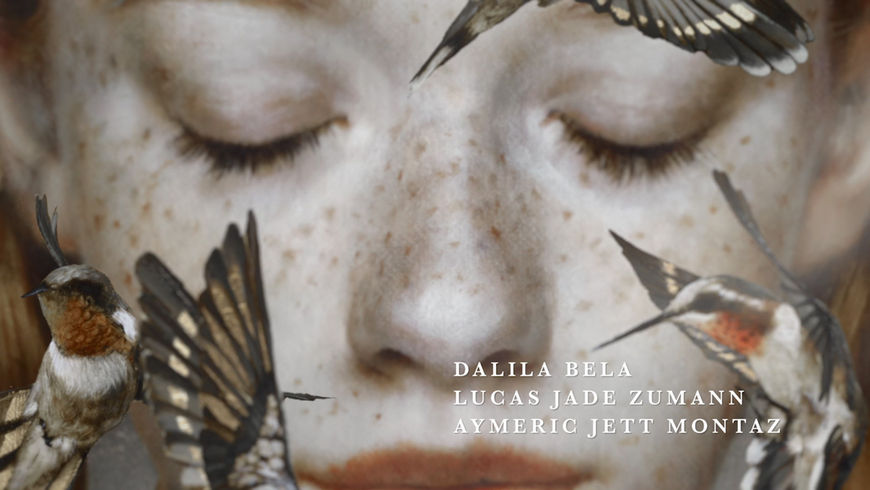
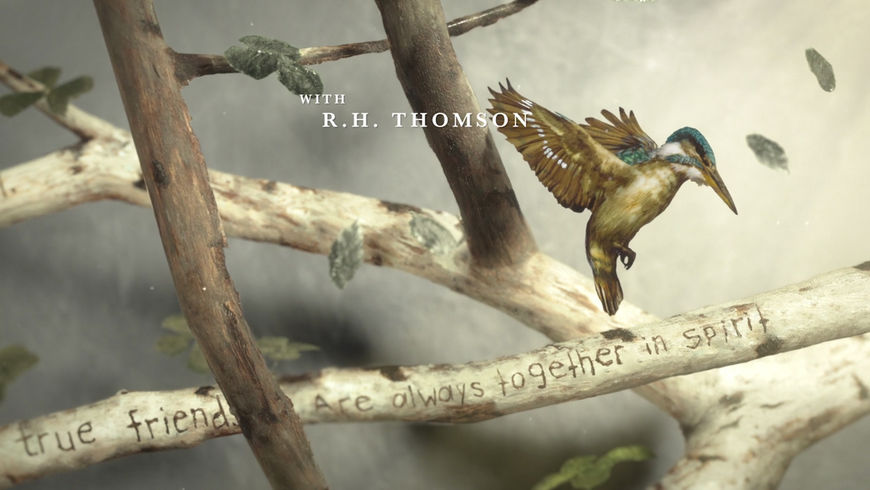
Can you talk about the choice of the music? That Tragically Hip song is so iconic and powerful, particularly at this time. How did you choose that direction?
Miranda: Here’s the scoop on “Ahead by a Century”... Moira and I both felt the need for some music that was contemporary and very different from the music in the series which is primarily Celtic in influence. We wanted the title sequence – including the music – to stand on its own and be memorable in its own right. We considered a number of artists and songs and nothing was quite working against our rough versions of the title sequence. We’re both huge fans of The Tragically Hip so we started trying some of their music against the images, and once we tried “Ahead by a Century” there was no looking back. The lyrics fit so perfectly, it’s almost as if the song was written for the sequence and not 20 years before.
What I especially love about the lyrics is the depth and respect they show – seemingly for a woman – and in our case it’s as if the song is being sung directly to Anne. I read a comment on social media recently that sums it up perfectly, the tweet said “In #annetheseries opening credits, when @gorddownie sings “You are ahead by a century”, I got teary imagining his words comforting Anne.” We felt and still feel the same way.
You mentioned that you’re both fans of titles. Do you have favourite title sequences at the moment?
Miranda: I'm really loving The Crown. Just the simplicity of that gold moving across the screen and forming that crown is pretty magical.
The Crown (2016) main titles, designed by Elastic
Moira: Yeah, you love that one. I mean, everybody always talks about and appreciates Game of Thrones. Those are just badass and beautiful. The Transparent opening has always kind of moved me.
Miranda: I think Moira's Flesh and Bone titles still – I can still look at those and enjoy every minute!
Moira: [laughs] Thanks, man!
Brad: A few weeks back I started watching episodes of Cheers for the first time and the titles are so good. They are so simple… the first few seconds is a live-action shot of outside the bar and then the street scene freezes and it's overlaid with a tinted photo of the same corner from the turn of the century, then just simple Ken Burns-style camera pans across these beautiful still photos and unique fonts… it sucks me in every time.
Cheers (1982) main title sequence, designed by Castle/Bryant/Johnsen, Inc.
And last question: Moira and Miranda, you mentioned that you initially met to talk about this movie The Grizzlies. When is that coming out?
Miranda: We hope to be ready to show it by the end of the year, but Anne has been a little distracting and it's been hard to do both! [laughs]
Moira: Yes, that's fair to say!
Miranda: So that post schedule has been slowed down a little. We shot it in a town called Iqaluit, in Nunavut in the Eastern Arctic. It's a primarily Inuit cast, who are remarkable, who we found up there. Once again Moira's magic words... Hopefully it will premiere before the end of the year!
We'll look out for it. Thanks so much.


